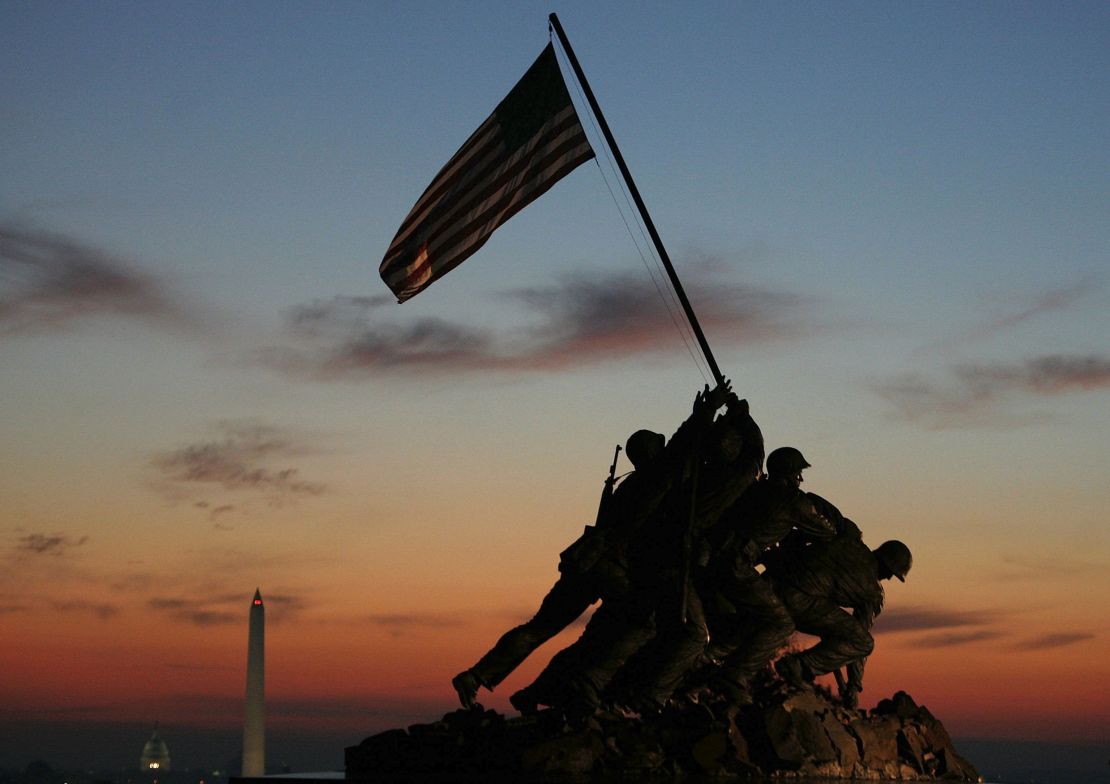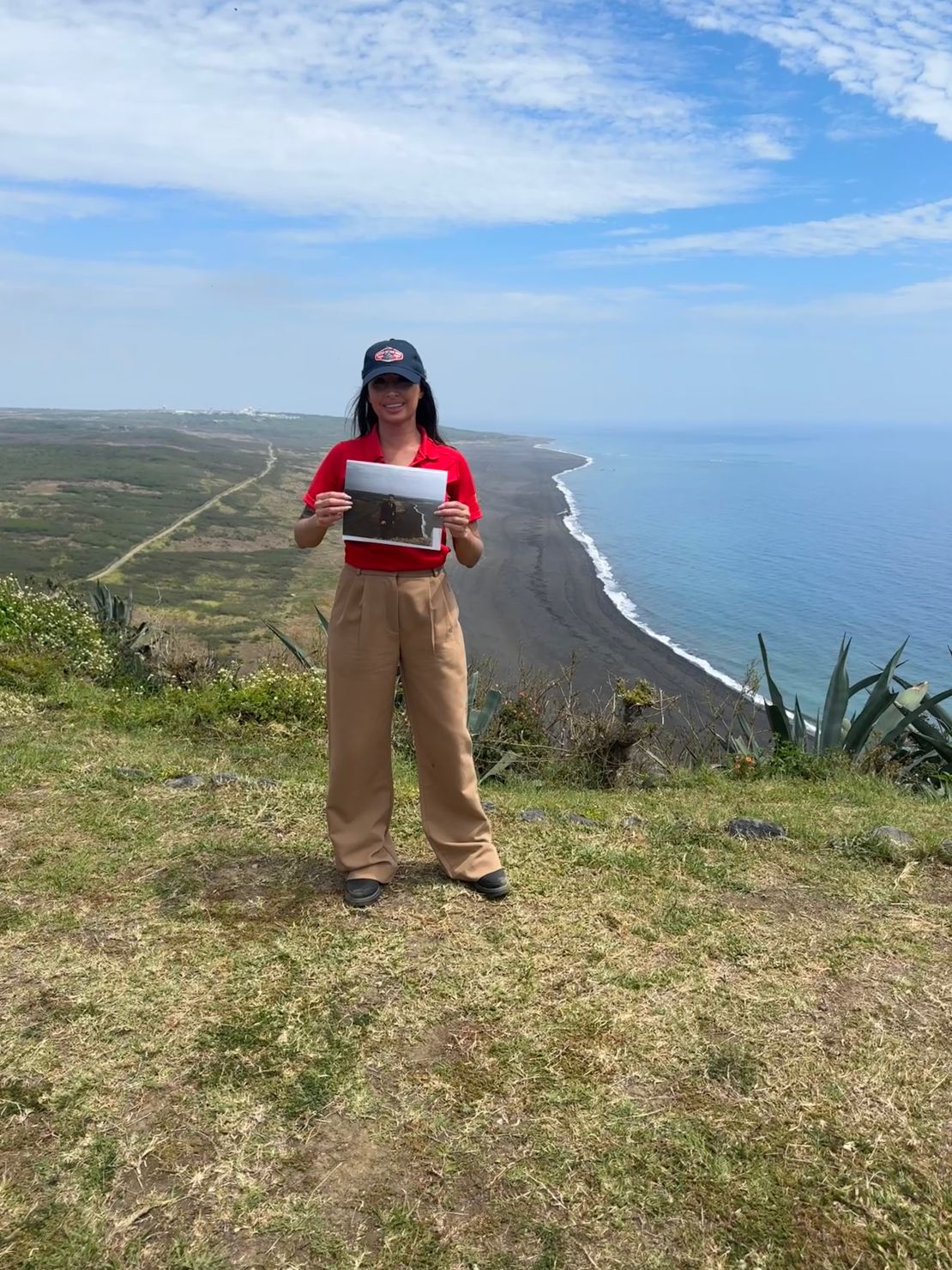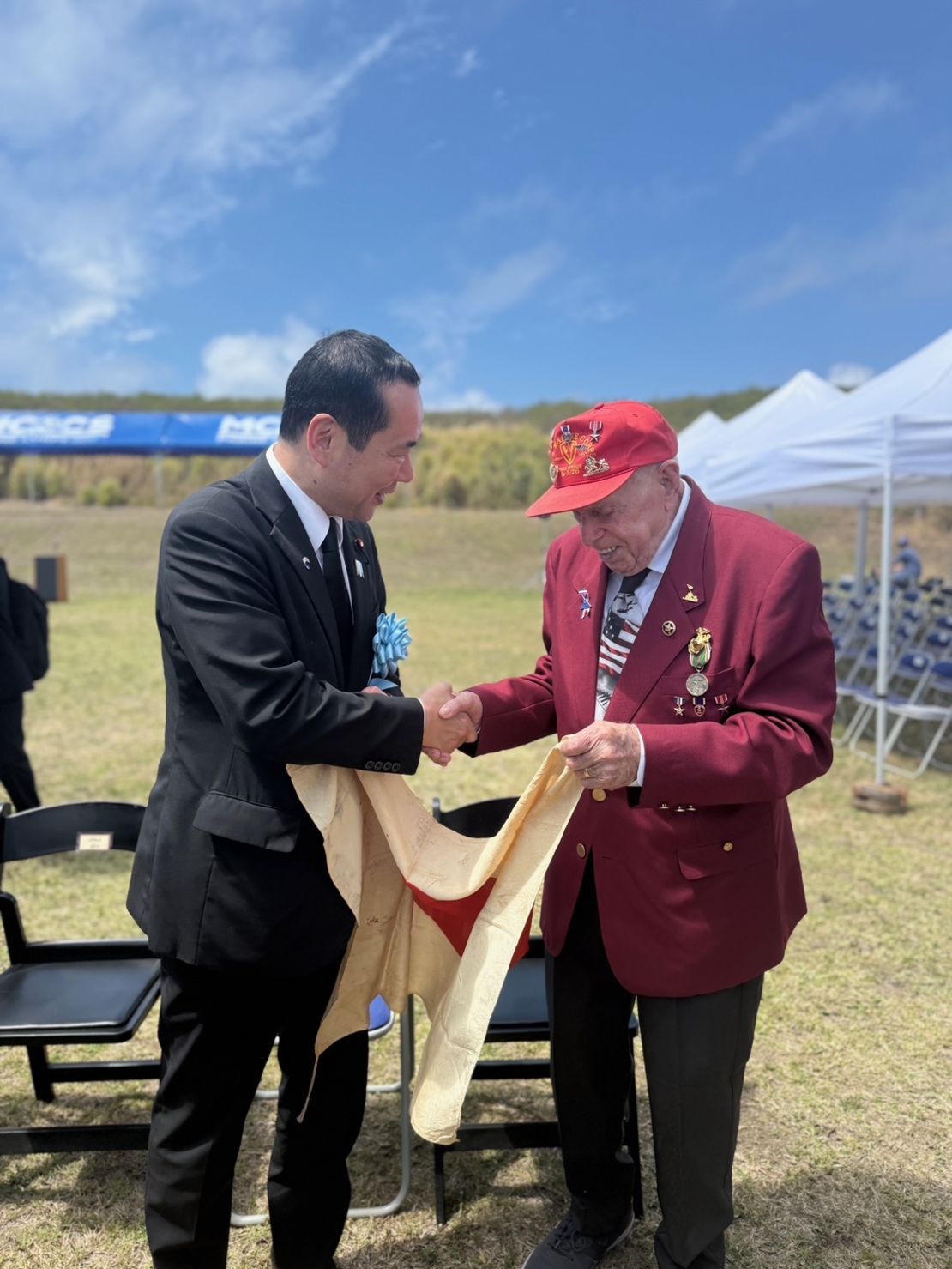Editor’s Note: Samantha Bresnahan is a supervising producer for CNN and author of the new book, “IN BLOOD, FLOWERS BLOOM: A World War II Story of Valor and Forgiveness Across Generations,” which includes the story of US Marine veteran Marty Connor described here.
Guam
CNN
—
On a humid day in early spring, Jessamyn Harter shouldered a weathered canvas backpack and set out toward a 550-foot (168-meter) mountain on a speck of island in the middle of the Pacific Ocean.
She didn’t have much time, but she was on a mission of her own. In honor of her grandfather, she was going to make every second count on Iwo Jima. It was the only day this year that American citizens could visit the island, reserved for a select few as part of a tour that originates from the US territory of Guam.
Returned by the US to Japan in 1968, and eventually renamed Iwo-To (Iō-Tō) in 2007, Iwo Jima (which means “sulfur island” in Japanese) was the site of one of World War II’s most important — and bloody — battles.
On February 19, 1945, 70,000 members of the 4th and 5th US Marine Divisions, with the 3rd Division eventually being called in for backup, stormed the black volcanic beaches of Iwo Jima in what would become a 36-day battle with Imperial Japanese forces tasked with defending the island and its airstrips. Only around 750 miles from mainland Japan, Iwo Jima was viewed as a crucial piece of the war effort in the Pacific — and imagery from the battle would become iconic symbols, including the US Marine Corps War Memorial in Arlington, Virginia.

Among the US Marines Corps (USMC) members landing on Iwo that day was an 18-year-old named Marty Connor. He was from Syracuse, New York, and Iwo would be his first real combat. He would survive the full 36 days of the battle, and go on to run an insurance business, get married and start a family.
He would also become Jessamyn Harter’s grandfather.
As much as the battle of Iwo Jima shaped Connor’s life, it’s what happened after that would be his greatest legacy.

In 1970, Connor returned to the island alongside his wife and some 30 other Marines for what would eventually become known as a Reunion of Honor, a tradition that continues today. On top of Mount Suribachi, where the flag raising immortalized in Joe Rosenthal’s iconic photograph took place in 1945, Connor and his fellow Marines shook hands with Japanese veterans of the battle.
The former bitter enemies showed respect to one another, and it’s also where Connor first learned of a grassroots movement to return “souvenirs” taken from the bodies of dead enemy soldiers in the Pacific, back to the families of the original owners in Japan.
Connor watched with interest that day in 1970 as a Marine returned souvenirs to a Japanese family — because he had souvenirs of his own back home. Twenty-five years after the battle, he finally knew what he should do with them.

Connor went back to central New York and packed up some of his own souvenirs, sending them to a former Imperial Naval captain-turned-Buddhist monk he met during the reunion named Tsunezō Wachi, who was searching for identifiable markings on these objects to track down surviving family. Many of those families in Japan had little to no information on how, where and when their loved ones had died. Having a piece of their ancestors, such as a Japanese battle flag or personal diary, meant their departed souls could finally be at rest.
Wachi was able to return Connor’s initial souvenirs to the families. Inspired, Connor began spreading the word through the USMC veteran community across America, at reunion events and in USMC publications, and soon packages began arriving to his home in Syracuse.
For more than 40 years, he shipped objects back to where they belonged.
“When I was younger, I just remember seeing Japanese flags and stuff in his office, (but) I wasn’t really aware of what he was doing and what was going on,” Harter, 43, said. “But you’d see the letters written to him in Japanese and I guess I didn’t really understand it until later on, when I was able to kind of grasp what a huge impact and a huge offering of peace between the two countries. And what makes me even more proud of my grandfather, is that he can do that. And he did that for 40-plus years.”
It was a long, tough day that began at 3:30 a.m. in Guam on Saturday, March 29. The United Airlines charter flight, organized by the Iwo Jima Association of America and a tour company called Military Historical Tours, in partnership with the USMC and Japanese Ministry of Foreign Affairs, flew more than 100 passengers from Guam’s airport an hour and a half to the hangar on Iwo Jima.
From her window seat, Harter marveled at how small the island looked — “you could almost pinch it between your fingers,” she said. “It was just a very tiny island for such a brutal battle.”
Not only was it small, it was surprisingly green, Harter added, a stark contrast to the barren landscape immortalized in photos and video from the battle. In the 80 years since the bombardment, nature had been busy reclaiming Iwo Jima.
If Harter wanted to climb to the top of Mount Suribachi and step on the famed landing beaches, she had just around five hours to cover a distance of roughly 10 miles (16 kilometers) — on foot. She also had to make a choice: she couldn’t visit both landmarks and attend the Reunion of Honor, which this year included both the sitting US secretary of defense and Japanese defense minster for the first time, as well as Japan’s prime minister, Shigeru Ishiba.
Harter chose Suribachi and the beach, she said, “because the first Reunion of Honor that my grandfather (attended), took place on the top of Mount Suribachi.”
When she reached the top (after many pleas to her grandfather to “help me get to the top of this”), Harter found herself in tears.
She carried objects from her grandfather, including the original canvas pack that he had carried during the battle’s full 36 days — now it has spent 37 days on Iwo, she said with a smile — one of his 5th Marine Division patches, and the small prayer book he kept in his uniform pocket.
Harter also made it to one of the landing beaches, sitting on the hot, rocky, black volcanic sand and reflecting on what had happened there.
“I feel like I have been given a gift that not a lot of people are given,” she said the next day back on Guam. “And honestly … as soon as I stepped on to the beach, I did not feel worthy. I didn’t feel like I deserved to be there. I think that every USMC veteran deserves to step onto that island. That’s their heritage. That’s their foundation.”

See what this granddaughter brought to Iwo Jima that once belonged to her grandfather
It was not the only grandfather-granddaughter story that day. Charles Cram, a Navy corpsman who landed with the 5th Marine Divison on Iwo Jima, was there in person with his granddaughter, Holly Cram, 42.
It was the first time Charles Cram, who turned 99 two weeks before the reunion, had been back since the war. “It looked completely different,” he told CNN.
At the Reunion of Honor, Cram — who was shot in the leg during the battle and later awarded the Purple Heart and Silver Star — handed over a Japanese battle flag he’d taken during the war.

“He had taken a flag off of a Japanese soldier in one of the caves, and he’s had that for 80 years, and he basically was like ‘what am I going to do with it? I don’t want to keep it. I don’t know why I took it, but I want to give it back,’” his granddaughter Holly Cram told CNN in Guam. “And so I made sure I had it with me, and I kept asking him, to make sure, because I didn’t want to force him to do something he didn’t want to do. But he kept always saying, ‘yeah, that’s what I want to do.’ So I was able to (help him give it back) after the ceremony.”
Among the delegation to receive it was Yoshitaka Shindo, the grandson of General Tadamichi Kuribayashi, who commanded Japan’s forces on Iwo Jima during the battle.
“I think it’s really incredibly special to see him give that back because it was never his heart to have a souvenir or have something that would make the Japanese feel bad … I think he realizes that was somebody’s family member’s flag, and there’s no reason for me to keep this, and I want to give it back,” Holly Cram added. “It’s beautiful to see both of our countries have that type of relationship now. There’s no other place on Earth where there was a fight of that magnitude where both countries come back and experience the holy ground of it.”
That’s the legacy that Harter wants people to know about, too, in honor of her own grandfather Marty Connor, but also all those who’ve made that same choice — like Cram — to see former enemies as fellow humans with loved ones of their own.
“It is such a beautiful act of love and forgiveness. Because (for) both sides, it was a bitter, bitter war and so many lives were lost. And to be able to forgive your enemy and to find compassion, to give them closure is something a lot of us probably can’t do or won’t do,” Harter said. But her grandfather did.
“His character, his kindness, his heart … He truly is my hero.”
